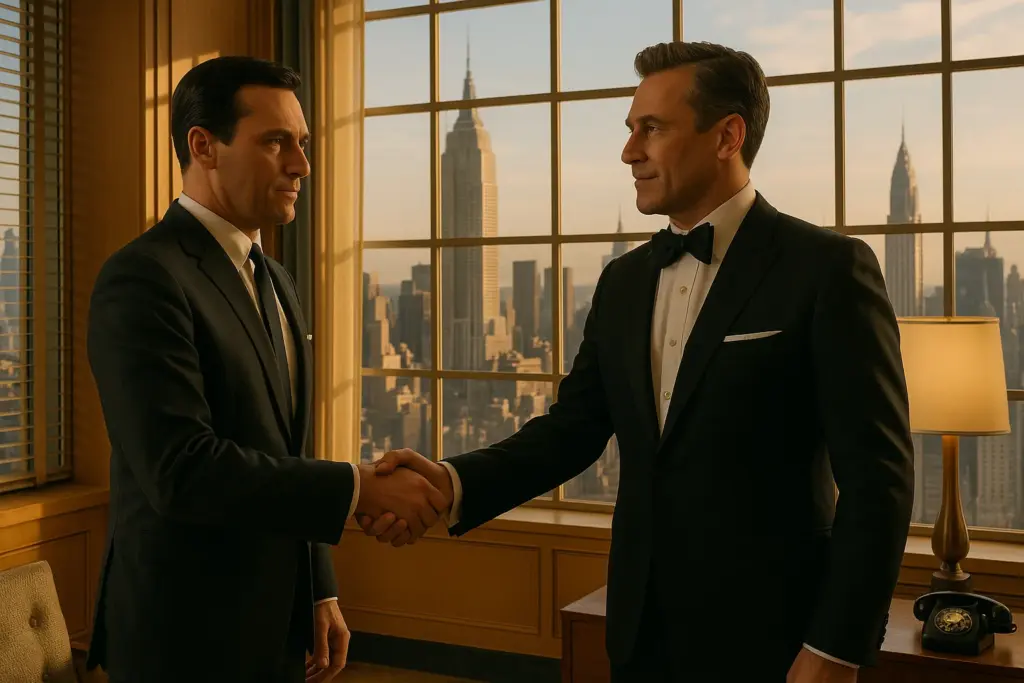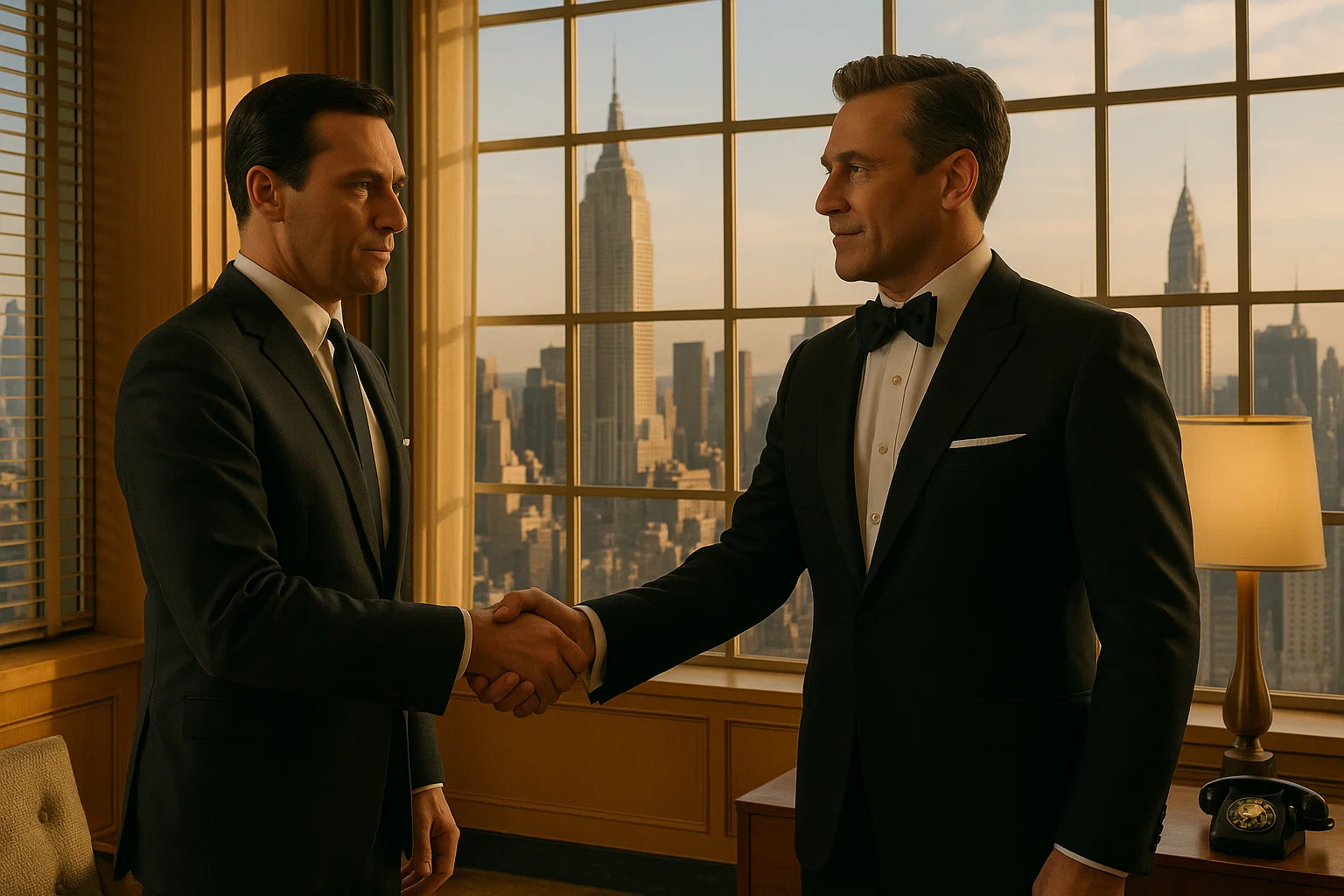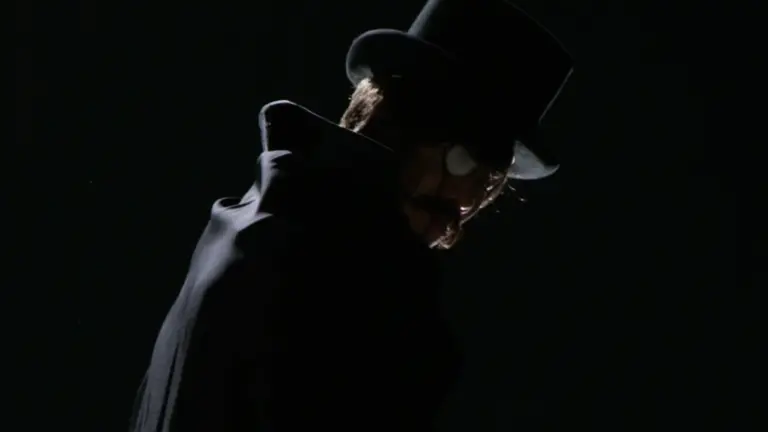Don Draper 2.0?
If you thought you’d seen the last of Don Draper, think again. Jon Hamm is back on our TV screens, smoother and sharper than ever – but this time as Andrew “Coop” Cooper. Totally different guy, totally different trouble, but somehow startlingly familiar. “Your Friends & Neighbors,” Apple TV+’s latest hit, brings Hamm back into the spotlight after dominating our screens during the iconic run of Mad Men. And while Coop might not be pouring a whisky neat after brainstorming advertising slogans, he’s still up to his eyeballs in suave chaos. Let’s dig in.

Draper vs. Cooper: Twins Born Decades Apart?
At first glance, Coop and Draper seem oceans apart. Draper’s a 1960s advertising executive, slicked hair, cigarettes perpetually dangling. Meanwhile, Coop’s a modern-day hedge fund hotshot who graduated from Princeton – high finance instead of high fashion. Yet, scratch below that shiny surface, and the similarities jump at you like vintage ad jingles.
Both men practically glide through a sheen of confidence, charisma dripping from their well-tailored suit jackets. But confidence masks insecurity. Draper spent seasons unraveling a messy web of secrets – fake identities, hidden past traumas. Coop, though living generations later, isn’t doing much better. His picture-perfect existence splinters to pieces after an ill-advised affair, turning that Wall Street golden boy into an outcast. Suddenly jobless, money-less, status-less, Coop spirals. And when pressed with desperation, he becomes…a burglar. Yep, our well-educated prince resorts to stealing the fancy stuff he once casually bought.
Remember Draper’s famous layer cake of lies? It’s like déjà vu. Both Coop and Draper harbor secrets that blow up catastrophically. Draper masks a stolen identity from Korea; Coop conceals a downward spiral sparked by betrayal and failed ambitions. Each man cultivates a public persona designed to conceal fractures underneath. Their facades chip away gradually, making each episode a layered revelation of hidden truths.
Mastering Moral Ambiguity
Here’s the juicy bit: neither character makes it easy to like them, but you just can’t stop watching. Jon Hamm himself once tagged Draper a “pretty dismal, despicable guy”. Yet despite obvious flaws, we’re glued to their every move. Coop’s burglary spree feels wildly irrational at first glance, yet it somehow matches Draper’s chaotic passion. Both men rationalize their missteps. Draper always justifies cutting moral corners in advertising. And Coop? He calmly convinces himself these high-end thefts are temporary solutions; he thinks wealth and privilege shield him permanently.
Watching Coop rationalize his actions echoes Draper’s easiest talent: crafting persuasive, charming lies. Whether pitching Lucky Strike or pitching himself excuses, Draper was smooth, seductive, believable. Coop has quietly inherited that charisma. When he’s cornered and desperate, Coop calmly manipulates truths just like his spiritual predecessor.
Social Commentary, Then and Now
One reason these characters resonate is because they’re mirrors held up to society’s hidden flaws. Mad Men dissected consumerism, sexism, and hypocrisy hiding beneath sleek sixties wardrobes. Meanwhile, “Your Friends & Neighbors” zeroes in on today’s culture, skewering wealthy suburbia, privilege, and status symbols.
Creator Jonathan Tropper explained the show’s satirical bite, saying it explores wealth’s hollowness, prestige’s emptiness, and communities built entirely around image. Draper’s Madison Avenue is long gone, replaced by suburbs – yet the cutthroat flaws beneath wealth and facade-driven success remain intact. Coop’s fall highlights how quickly privilege evaporates once someone steps out of line.
Fun Facts from Behind the Scenes
Adding spice behind the scenes, showrunner Tropper admitted rewriting one key premiere scene over 30 times to nail precisely what Coop represents. Hamm’s exacting portrayal clearly called for something special, reflecting the complexity that’s reminiscent of Draper’s own carefully crafted presence.
And critics haven’t completely swooned – not yet. The Financial Times, in fact, called it “a stale caper,” critiquing the somewhat predictable narrative. But even if storylines taste just a tad reheated, Hamm’s dynamic presence remains undeniably fresh. He singlehandedly gives viewers plenty reasons to stick around.
Coop, Draper, and Hamm: One Irresistible Cocktail
So here’s the thing: maybe Coop is Draper reborn for today’s disillusioned, privileged set. Hamm brilliantly dances across that tightrope again, balancing charm with deceit, success with desperation. Viewers scoff at Coop’s morally murky antics – and simultaneously cheer, unable to resist his magnetism. Sound familiar? Yeah, that’s vintage Jon Hamm right there. Draper may have smoked Lucky Strikes, but Coop’s stealing antique watches. Different props, same mesmerizing magic.
Ultimately, Hamm keeps drawing us in by playing antiheroes tangled in uncomfortable truths. He effortlessly projects that confident exterior – then cracks it wide open to reveal complicated, messy humanity beneath. Whether Coop manages redemption, we’re not sure yet. But like Draper before him, he’s going to keep us glued.





